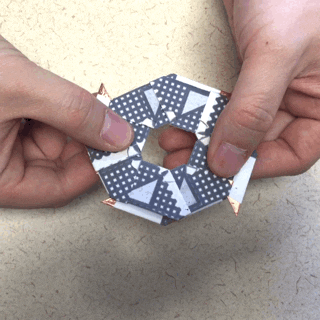
Credit: Abhijith A
The novel mask, developed by Professor Wallace Leung of The Hong Kong Polytechnic University, is made out of multiple layers of different types of nanofibres, which filter nanosized particles.
Layering the nanofibres provides a large surface area, enhancing the natural movement of particles and their interception by the fibres. It also allows users to breathe comfortably since air flows freely through the multiple layers without much resistance.
Conventional masks made from microfibres cannot effectively filter nanosized particles such as the influenza A virus, or the more seriously damaging MERS and SARS viruses, which can cause serious infections, illness and even death. Many Asian countries also deal with serious airborne particles from pollution and forest fires, which are too small to be filtered by conventional microfibre masks.
Different types of nanofibres can be used in some layers of the mask to provide additional functions. For example, incorporating a layer of titanium dioxide and other semiconductor composite nanofibres in the mask converts pollutant gases, such as nitrous oxide, to harmless substances when the fibres are exposed to visible light, even under room light conditions. Also, incorporating chitosan nanofibres in the mask can provide antibacterial functions when the fibres become wet from sweat, for example.
Dr Leung has also adapted the nanofibre filter for use in airplane and vehicle cabin ventilation systems. Both the nanomask and cabin ventilation filter have been internationally recognized, receiving a Gold Medal in 2014 from the 42nd International Exhibition of Inventions in Geneva and a Special Merit Award from the Romanian National Ministry of Education. Both technologies have been licensed to Avalon Nanofibre Ltd., which has immediate plans to develop and commercialize products based on these technologies to meet market needs.
Did you know?
The influenza A, SARS and MERS viruses range in size from about 80 to 140 nanometres in diameter. Ultrafine particulate matter suspended in the air originates from combustion and ranges from 10 to 100 nm in size. When these particles gather, they form larger particles several hundreds of nanometres in size and reflect visible light. This is what we know as “smog”. In comparison, the diameter of a human hair is about 100 microns or 100,000 nanometres.
The Latest on: Nanomask
[google_news title=”” keyword=”nanomask” num_posts=”10″ blurb_length=”0″ show_thumb=”left”]
via Google News
The Latest on: Nanomask
- Ming-Na Wen's Best Stunts, Rankedon April 27, 2023 at 8:25 am
Wearing a "nanomask" that made her look like May, the real Melinda May essentially has to fight herself. In reality, both parts were played by Ming-Na Wen and the amazing scene was accomplished ...
via Bing News










